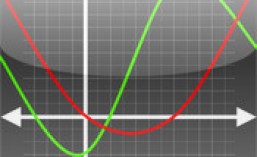Part 1 of an interview with an avid Smartboard user
Columnated excerpts and analysis
SETTING AND BACKGROUND OF INTERVIEW
“Mr. Newton” and I met after school in his classroom. Several students were working on homework and quizzes, which is not unusual for a math classroom! The interview is with a mathematics teacher who has successfully integrated a Smartboard into his classroom instruction. During the interview he quickly manipulated images and tasks, showing obvious skill. His passionate demonstrations left me with no doubt that he has learned well and thoroughly how to use a Smartboard to its best advantage, and how to engage the students in active learning. “Mr. Newton” graduated from the University of Northern British Columbia in 2008, and had a computer science course aimed at classroom implementation of most common programs ( ppt. excel, Photoshop etc…). No Smartboard training.
INTERVIEW
EXCERPTS
1. What makes this vision a challenge to implement and what might be needed to actualize it?
• No training in school for teachers.
• In-service is good, but not enough.
• There needs to be time to play with it, learn from experts, observe classes and perfect techniques, otherwise you might as well go back to an overhead..
• There needs to be familiarity with web resources.
2. What about the teacher learning curve, and student learning curve?
Not that significant really. It is pretty quick to pick up at a basic level, longer for more advanced things. If you are good with computer basics you will pick it up quickly. The first time through a course it takes longer, yes, but every time after that it cuts down severely on the prep time and allows teacher far more time for monitoring student progress, and meeting needs as they arise.
Students seem to adapt to its use in class more quickly than teachers
3. Have you taught math without significant technology? How does it compare to your current use?
I actually use the blackboard in the class as well as the Smartboard. The daily lesson, notes, examples and support is done on the overhead. One to one work is done at the blackboards. I use the OH rarely, and manipulatives when appropriate. The best thing about not using overhead is no ink smudged on my hands and arms.
4. Is there another technology you would like to implement if you could?
I would like to buy a class set of clickers. With the ability to have
individual logins, recording scores for assessment and comprehension, and the appeal of new technology, I think I could use these.
Final Question: Are the kids better off with the technology?
I’d like to think so. The Smartboard is SO much more than just Blackboard v.2.0. With web content streaming, saving accessing and modifying pdf files, games, interactivity and so much more it is a huge step from where we were. At the VERY least, my reduced prep time means I spend more time addressing their needs. So yes, the kids are better off.
ANALYSIS
This is not a new observation. In the Assigned video case studies (#4), the new teacher indicated that:
• Not enough time to incorporate technology
• Been to a few workshops but can’t apply
• Trouble shooting is a problem
• Teacher Ed. course did not focus on technology – a course would have helped
In discussions with colleagues, very few teachers receive the necessary technology training in their university studies. The question for this, then, is “Why don’t all training programs for educators focus on specific technology?
It is a bit of an assumption to suggest that “if you are good with computer basics, you will pick it up quickly”. I know a number of educators who are NOT good with computer basics. In Video Case #4, the retired teacher stated that:
• I find it frustrating
• I don’t have enough time,
• If I don’t practice it I just forget.
• The children know more than I do and learn more quickly
• It is easy for students to pick up.
Clearly, not all teachers will find this technology easy to pick up (but students will!)
I found this answer surprising. While the teacher I interviewed has clearly mastered the Smartboard, and troubleshoots problems quickly and effectively, he still uses the blackboard on an almost daily basis. I wonder if it is a connection to teaching and learning that still has a place in a “modern classroom”? If a student learns something on a blackboard, with chalk in hand, in a one-to-one capacity, does it take hold more strongly? If the student is solving it with chalk, are they helping to construct their own learning? I think the constructivist would say yes! This is another example of students learning in a myriad of different ways. Perhaps an alternate title for this interview could have been “New School” meets “Old School”!!!
I have also thought about clickers. The SMART response PE wireless remote is not cheap, but at under $1500.00 (USD) for the receiver and 24 remotes, or $400/receiver and $79.00/remote it is more justifiable to start with a small number, and build once it proves successful. Pricing information can be found at Smarttech.com.
The interviewed teacher’s reference to Blackboard v.2.0 is a good point. Rather than just a fancy blckboard, the Smartboard is a crucial tool to this teacher’s delivery of curriculum, and to the student’s learning. The teacher is convinced the students ARE better off with the technology.
